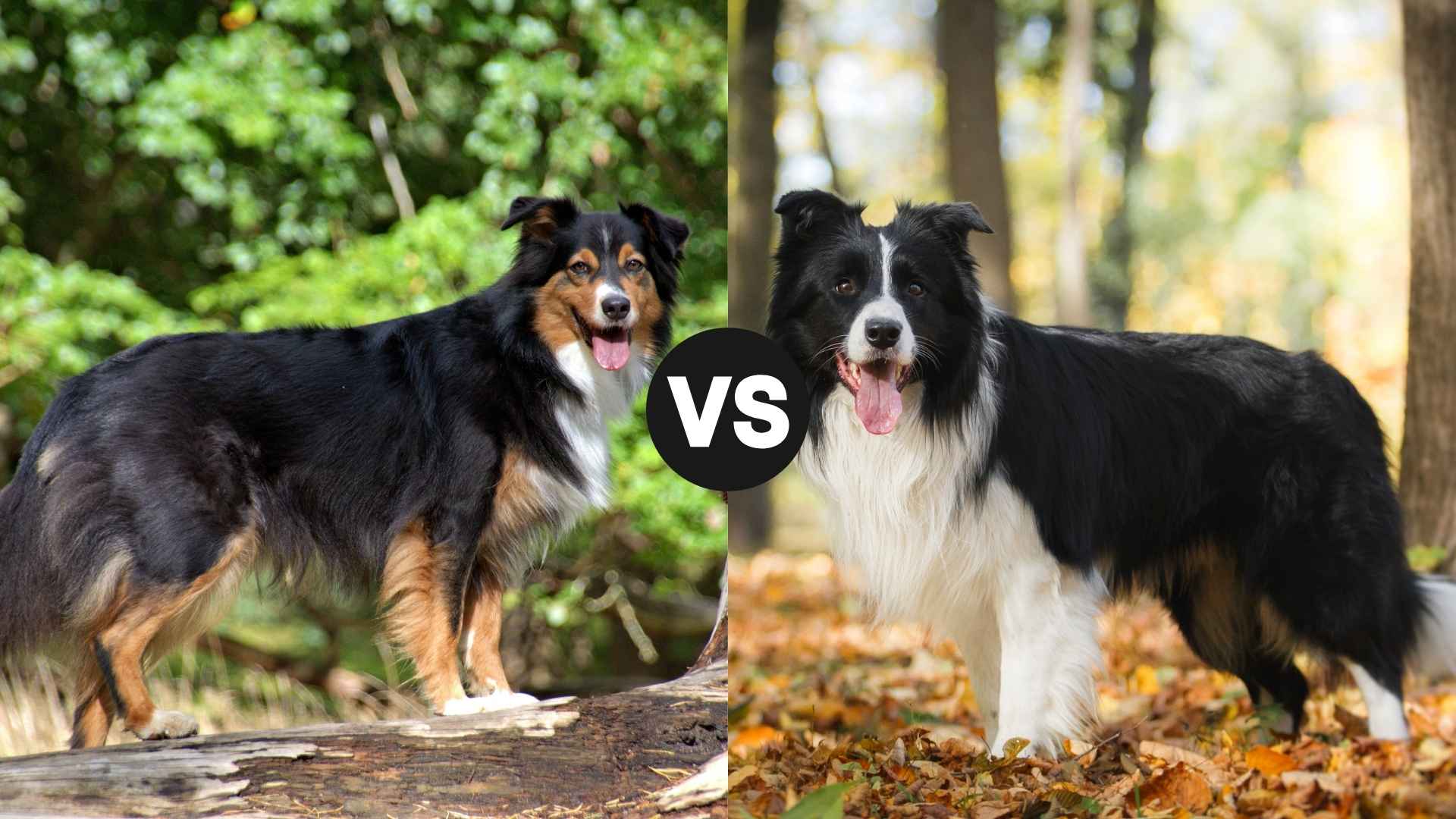You want a dog that’s smart, active, and loyal—but now you’re torn between two herding legends: the Australian Shepherd and the Border Collie. They both check the boxes for intelligence, energy, and a work ethic that puts most humans to shame. But which one is right for you?
At first glance, they seem similar—both fluffy, agile, and laser-focused. But peek under the fur and you’ll discover two very different personalities. One thrives on a routine and thrives with tasks. The other? A playful, family-loving whirlwind who herds your kids and then snuggles on the couch.
Whether you’re looking for a hiking buddy, a canine Einstein, or a dog that just needs a job to do, choosing between these two breeds is more than a coin toss. It’s about lifestyle, experience, and how much energy you’re really ready to keep up with.
Let’s break down the differences between these two smarties—so you can pick the perfect partner for your life, your home, and your level of chaos-tolerance.
Australian Shepherd vs. Border Collie
Size and Weight Difference
When it comes to herding breeds with serious brainpower and energy that could fuel a rocket launch, the Australian Shepherd and Border Collie are basically the overachievers of the dog world. So let’s break down their body specs in this friendly (and slightly fluffy) face-off.
Border Collie:
Think of the Border Collie as the lean, swift athlete who’s always training for a mental and physical Olympics that never ends. These pups are all about agility, speed, and laser-sharp focus. Their size reflects that nimbleness.
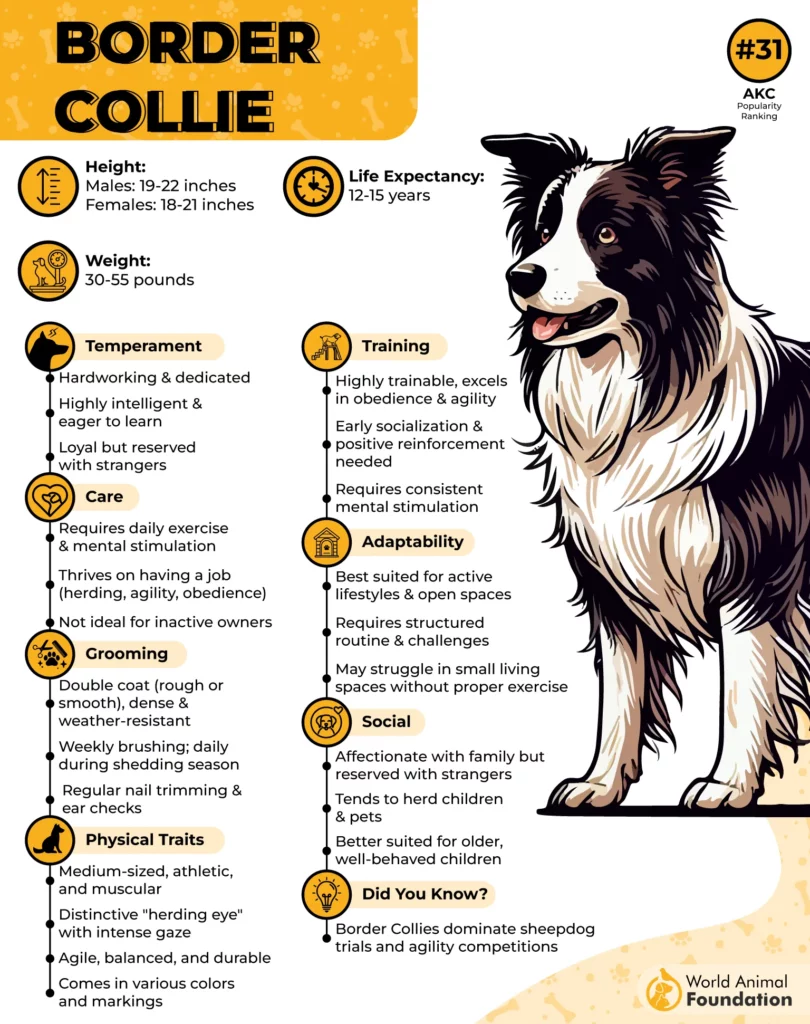
Height: 18–22 inches at the shoulder
Weight: 30–45 pounds
Build: Slim, athletic, and made for motion
Vibe: The dog version of a professional parkour runner
Border Collies are light on their feet—almost catlike in their movement—and their slightly smaller frame makes them ideal for weaving through agility courses or, you know, chasing a rogue squirrel with surgical precision.
Australian Shepherd:
Now meet the Aussie, the Border Collie’s broader, fluffier cousin who’s got just as much energy, but carries it with a bit more oomph. Picture a CrossFit trainer who also knows how to herd sheep on the side.
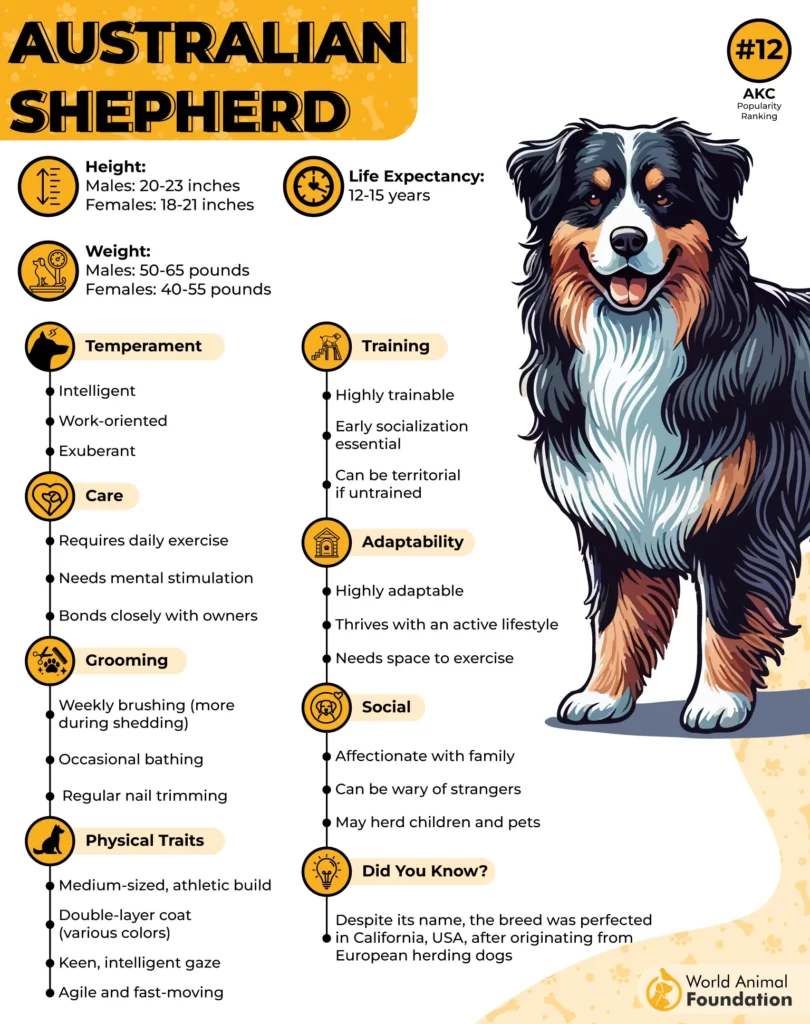
Height: 18–23 inches at the shoulder
Weight: 40–65 pounds
Build: Sturdy, muscular, and fluffier than your winter throw blanket
Vibe: The outgoing extrovert who brings snacks and energy drinks
Most Australian Shepherds either have docked tails or are born with naturally bobbed ones, says WebMD. Their coats come in striking colors like black, red, blue merle, and red merle.
One of their most unique features is their eye color—Aussies often have two different colored eyes. These can include shades like dark brown, blue, hazel, amber, or green.
Aussies may not be quite as sleek, but they’re still agile—and they’ve got more of that strong, broad-chested build that makes them look ready to wrestle a bear (or at least a garden hose).
Comparing Trainability and Intelligence
Let’s be honest: both the Australian Shepherd and the Border Collie are scary smart. Like, “learn-a-new-trick-in-five-minutes-and-then-teach-it-to-the-cat” smart. But how do they compare in training?
Border Collie:
Intelligence Level: Off the charts (literally ranked #1 smartest dog breed)
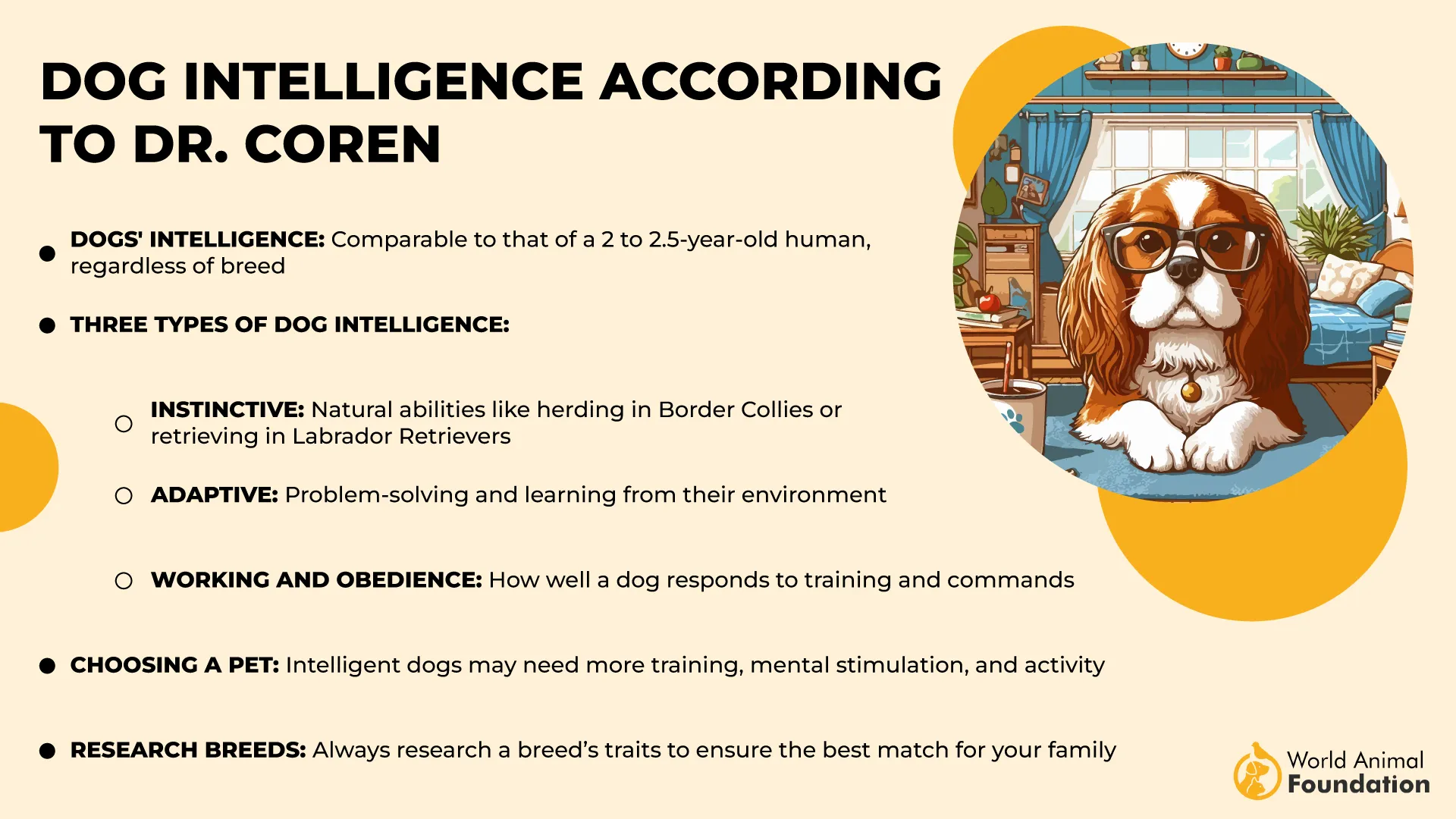
Training Style: Highly responsive, super quick learner, thrives on structure and mental stimulation
Quirk: Will judge you silently if you’re not being efficient with your commands
If the Border Collie were a student, it’d be that kid who sits in the front row, finishes the homework before class starts, and gets bored unless you give them extra credit.
Petplan noted bred for herding excellence, Border Collies thrive on learning new things and burning off energy—they absolutely love a good mental and physical workout. These smart dogs don’t just like tasks—they live for them. Herding, agility, scent work, escape room challenges… they’re into it all.
Pro Tip: If you don’t train them or give them jobs, they’ll find one on their own (like herding your guests or alphabetizing your shoes).
Australian Shepherd:
Intelligence Level: Top-tier (not quite Border Collie, but still elite)
Training Style: Eager to please, loves mental games, picks up commands fast
Quirk: May add their own “flair” to tricks for bonus points (a little drama never hurt)
Aussies are highly trainable, with an obedient nature and a love for learning. They’re people-pleasers, but also confident thinkers—so while they’ll ace your training sessions, don’t be surprised if they improvise a little to keep things fun. (Did they sit… or did they perform a sit?)
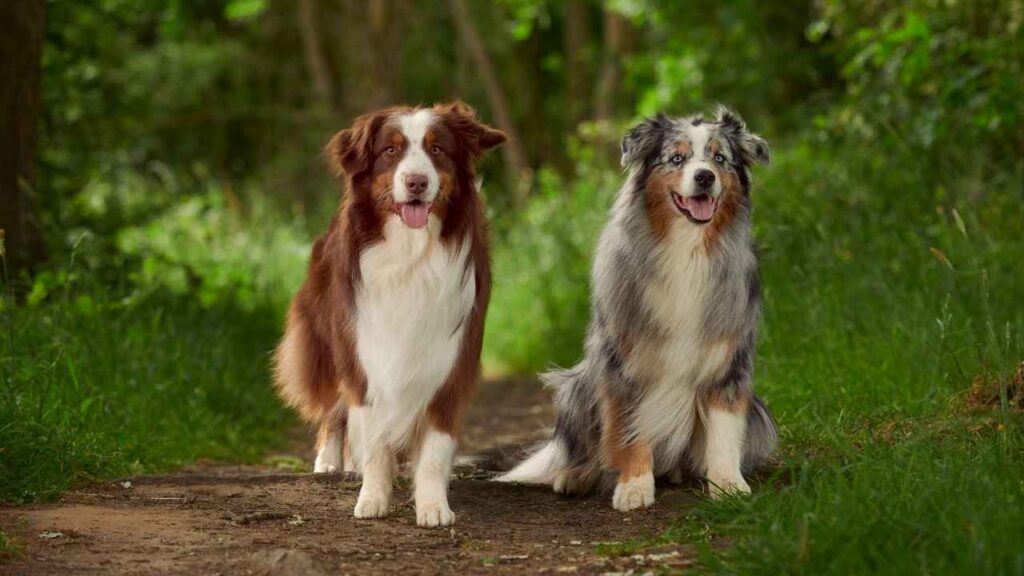
Pro Tip: They respond best to positive reinforcement and hate being bored, so keep training playful and dynamic.
Personality Traits and Temperament
Brains are great, but what about vibes? Here’s how these two lovable geniuses differ in temperament.
Australian Shepherd:
✔ Intensely focused – Always in “work mode,” even during play
✔ Reserved with strangers – Loyal to their circle, cautious with newbies
✔ Devoted and loyal companion – Often bonds strongly with one person
✔ Extremely energetic – Needs daily mental and physical workouts
✔ Easily bored – Can become destructive if not stimulated
Border Collie:
✔ Playful and outgoing – The social butterfly of herding breeds
✔ People-pleaser – Eager to make their humans happy
✔ Protective and alert – Great watchdog instincts without being overly aggressive
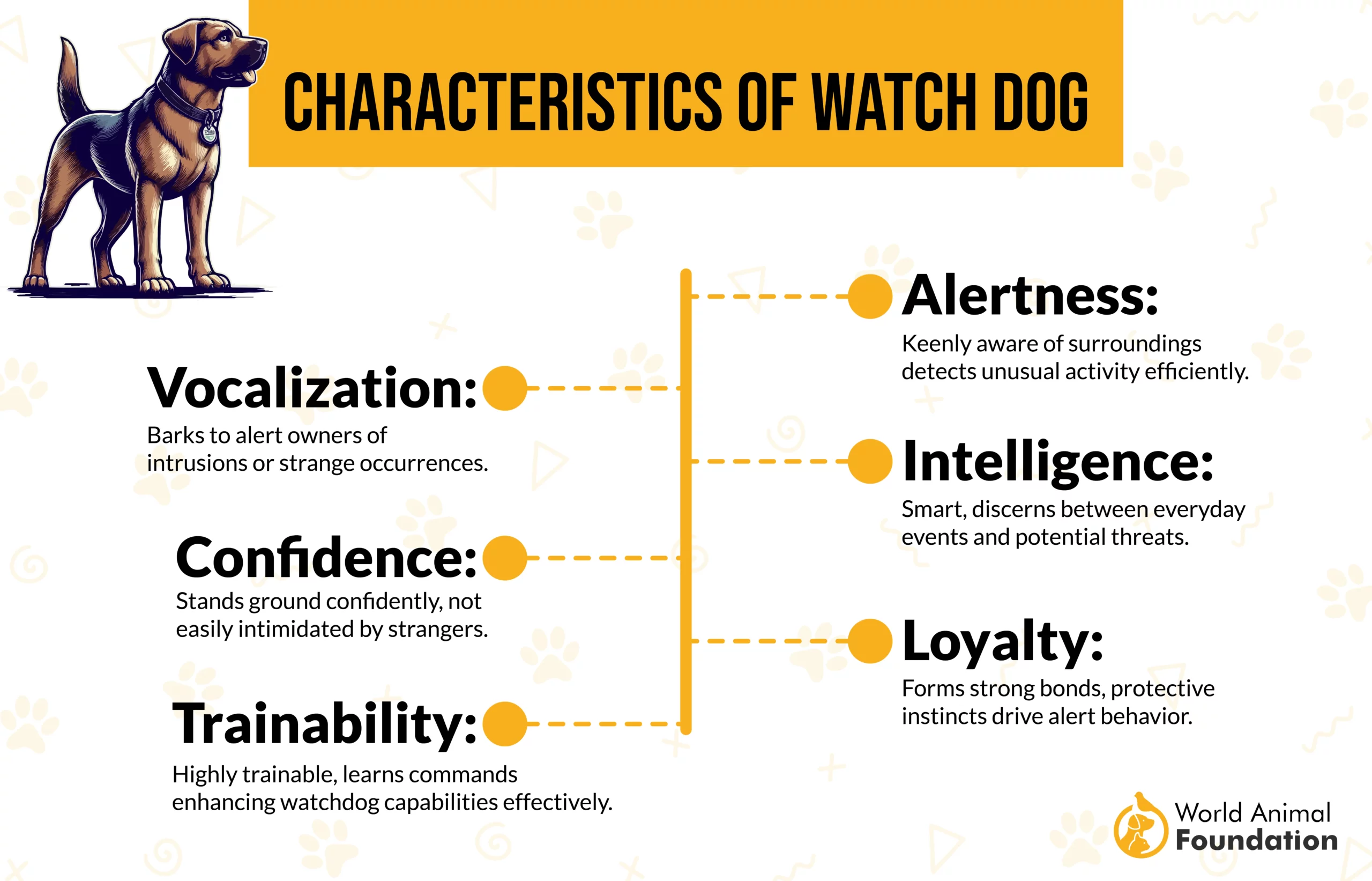
✔ Family-friendly – Bonds well with the whole crew, including kids
✔ Expressive and vocal – Big on head tilts, bark-conversations, and dramatic flair
✔ Affectionate– Loves to snuggle when the work/play is done
Adaptability and Independence Assessment
When it comes to adapting to new environments or being left to their own devices, both the Border Collies and Aussies are brainy workaholics—but they handle change and alone time a little differently. Let’s break it down:
Australian Shepherd:
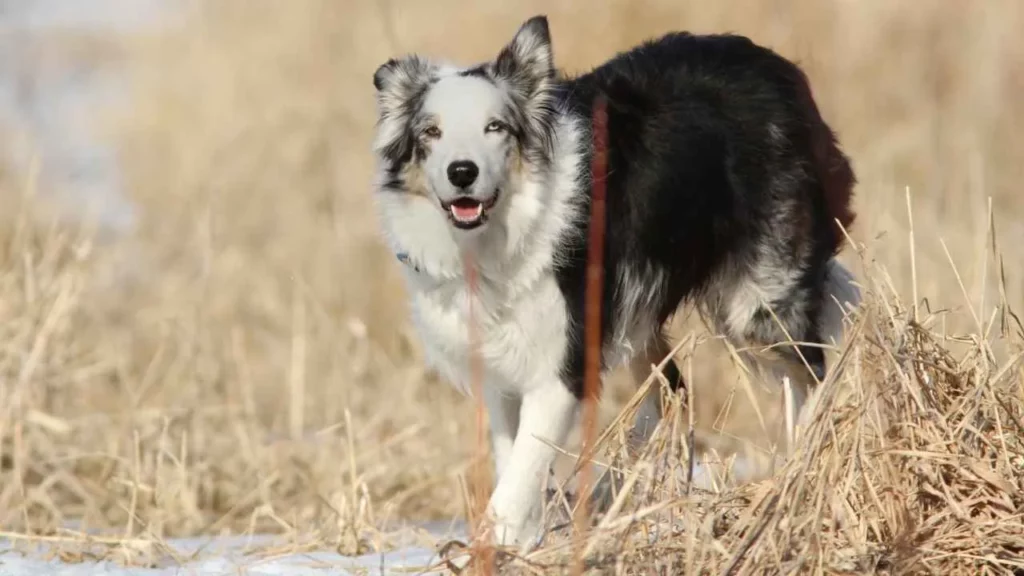
Adaptability:
Aussies are pretty good at going with the flow, so long as their people are involved. Move to a farm? They’ll herd your chickens. Shift to an apartment? They’ll adapt if you keep them physically and mentally engaged. They’re versatile and thrive on structure.
Independence:
Moderate. Aussies are shadow dogs—they love being close to their humans and can get a bit clingy, says PetMD. Left alone for too long, they may get anxious or turn to mischief (think: chewed furniture or redecorated trash cans). They prefer team missions over solo adventures.
According to the American Kennel Club (AKC), they’re not the ideal match for everyone. But if you’re after a sharp, energetic, and highly trainable companion for work or athletic pursuits, the Aussie might just be your perfect match.
Border Collie:
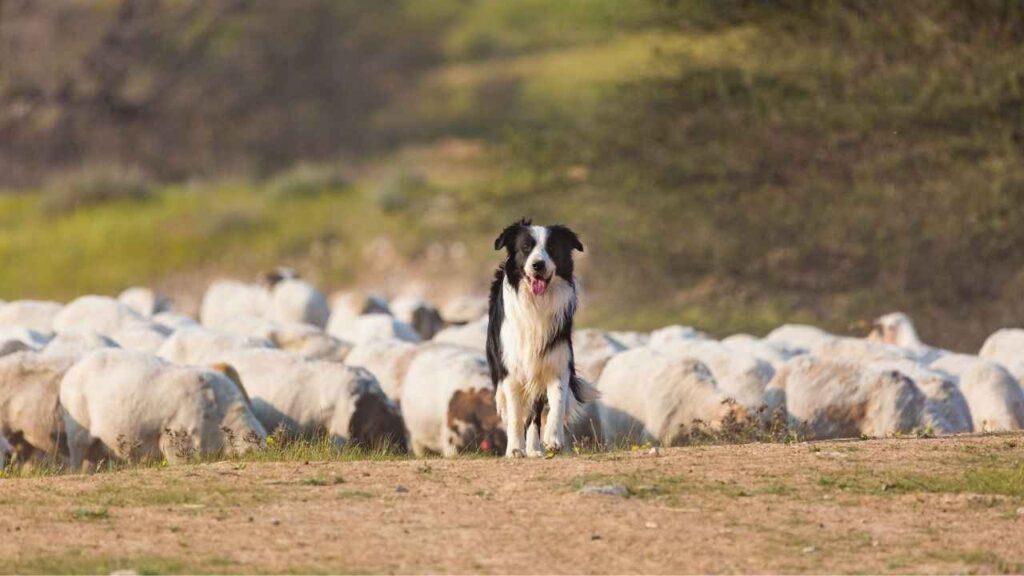
Adaptability:
Border Collies can handle changes in routine or scenery fairly well, as long as their core needs (vigorous exercise and stimulation) are met. They do best in environments that challenge them—mentally and physically. A couch-potato lifestyle? Hard pass.
Independence:
Higher than the Aussie. Border Collies were bred to think and act independently in the field, so they have a bit more self-sufficiency. That said, “independent” doesn’t mean they enjoy being alone all day—they still crave purpose, direction, and yes, your company.
Bite Force and Characteristics
(Because yes, sometimes you need to know how strong those jaws really are — spoiler: they’re impressive but not scary.)
Border Collie:

Estimated bite force: Around 200–230 PSI (pounds per square inch)
Characteristics: Sharp and precise—Border Collies use their mouths like tools for herding, gently nipping at livestock to guide them. Their bite isn’t about power; it’s about control and finesse.
Bite Style: Controlled, purposeful, and rarely aggressive. More “tap-tap” than “chomp-chomp.”
Australian Shepherd:
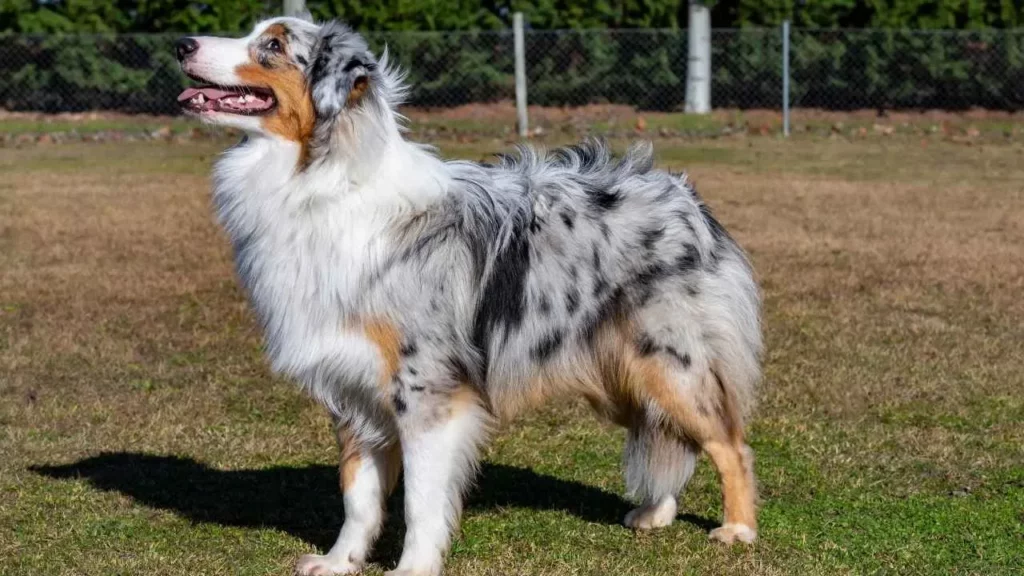
Estimated bite force: Around 230–250 PSI (slightly stronger than Border Collies)
Characteristics: Stronger jaw for the job, Aussies have a bit more muscle behind their bite. They use it carefully in herding and protection, but are generally gentle with people.
Bite Style: Firm but controlled—like a well-trained pro who knows exactly how much pressure to apply.
Both breeds are herders, so their bite force is functional and purpose-driven rather than aggressive. Neither breed is prone to random biting—they’re smart enough to use their mouths only when necessary.
Health Issues and Expected Lifespan Comparison
Both the Border Collie and Australian Shepherds are energetic brainiacs, but even the brightest stars can face health hurdles. Here’s how they stack up in terms of longevity and common medical concerns:
Border Collie:
Lifespan: Around 12 to 15 years — these lean athletes often stick around for a long time!
Common Health Issues:

Hip Dysplasia
Collie Eye Anomaly (CEA)
Epilepsy
Progressive Retinal Atrophy (PRA)
Deafness
Pro Tip: Regular vet checkups and genetic testing can catch these early, helping your Collie stay in top shape.
Australian Shepherd:
Life expectancy: Around 12 to 15 years, similar to Aussies, often with a healthy, active lifestyle.
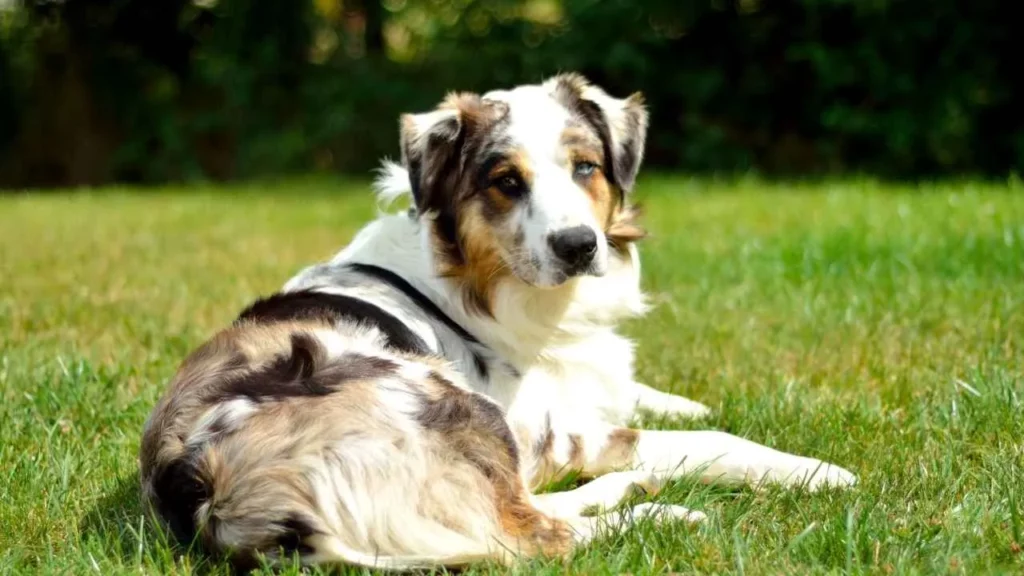
Common Health Concerns:
Hip Dysplasia
Collie Eye Anomaly (CEA)
Progressive Retinal Atrophy (PRA)
Epilepsy
Deafness
Osteochondritis Dissecans (OCD)
Both breeds share several hereditary health risks, especially related to joints and eyes, so early detection and good vet care are essential. With proper care, Aussies and Border Collies can both live a happy, healthy 12–15 years or more
Nutritional Needs and Weight Management for Australian Shepherd vs Border Collie
Border Collie:
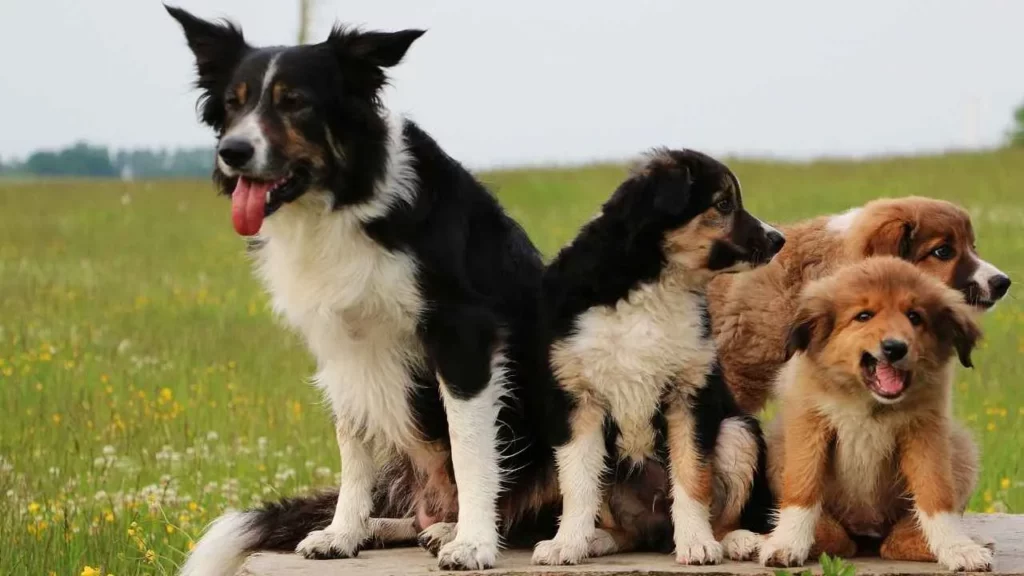
Calorie Needs: Moderate to high—these brainy athletes burn a lot of energy with mental and physical activity. Expect roughly 900–1,400 calories/day, depending on age and activity level.
Diet Tips: Focus on high-quality protein to support their lean muscles and complex carbs for sustained energy. Because boredom is their enemy, avoid overfeeding “just because”—Border Collies can be picky and may turn food into a game!
Weight Management: Keep an eye on their weight; even a slim breed can gain “fluff” if under-exercised. Regular exercise and portion control are key to avoiding the dreaded “couch potato Collie.”
Australian Shepherd:
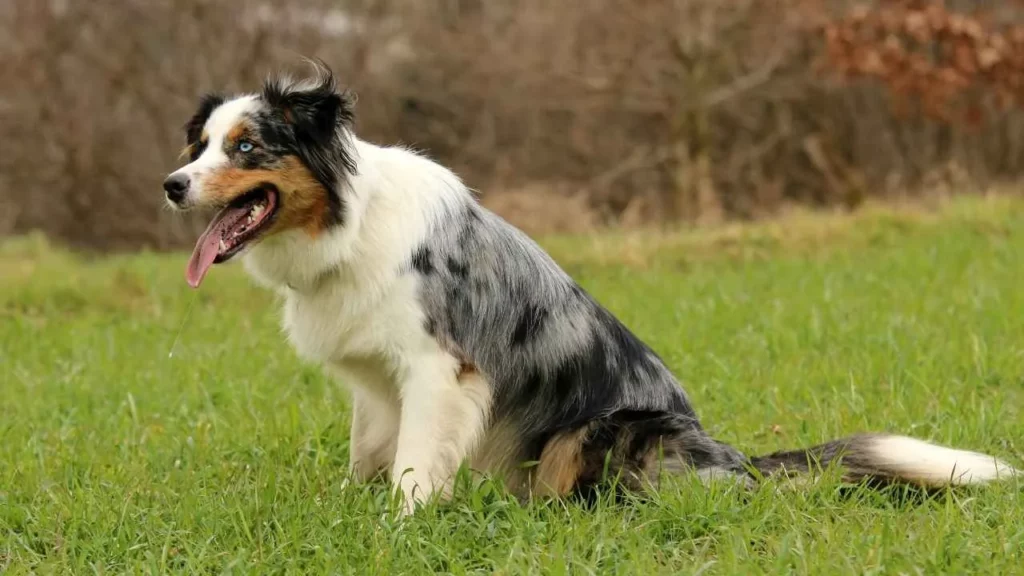
Calorie Needs: Slightly higher than Border Collies, especially given their more muscular build, roughly 1,000–1,600 calories/day based on activity.
Diet Tips: Protein-packed meals to maintain those strong muscles, plus omega fatty acids for their luxurious coats. Aussies love treats, so mindful snack portions help keep them in shape.
Weight Management: Aussies can easily bulk up if under-exercised. Their appetite is hearty, so consistent feeding routines and plenty of daily exercise keep the “Aussie spread” at bay.
Grooming Requirements and Allergy Considerations
When it comes to keeping your furry friend looking and feeling their best, understanding the grooming needs and allergy considerations of each breed is key.
Border Collie:
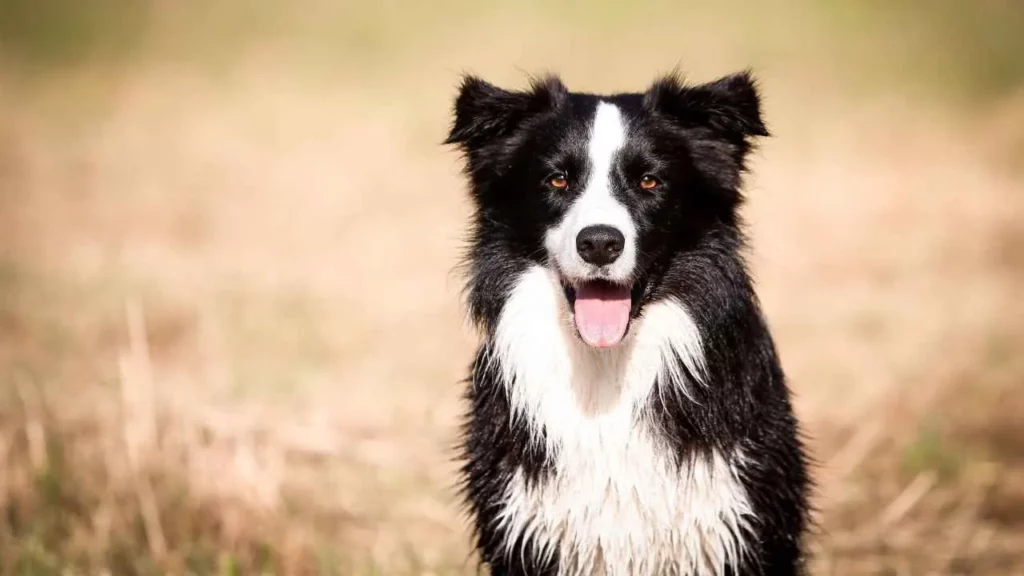
Coat: Medium-length double coat—soft undercoat with a weather-resistant outer coat.
Grooming Needs: Weekly brushing to prevent mats and control shedding (especially during seasonal “blowouts”). Occasional baths, nail trims, and ear cleaning.
Allergy Notes: Border Collies are not hypoallergenic. Their shedding can trigger mild allergies in sensitive people. Regular grooming and vacuuming help keep dander down.
Australian Shepherd:
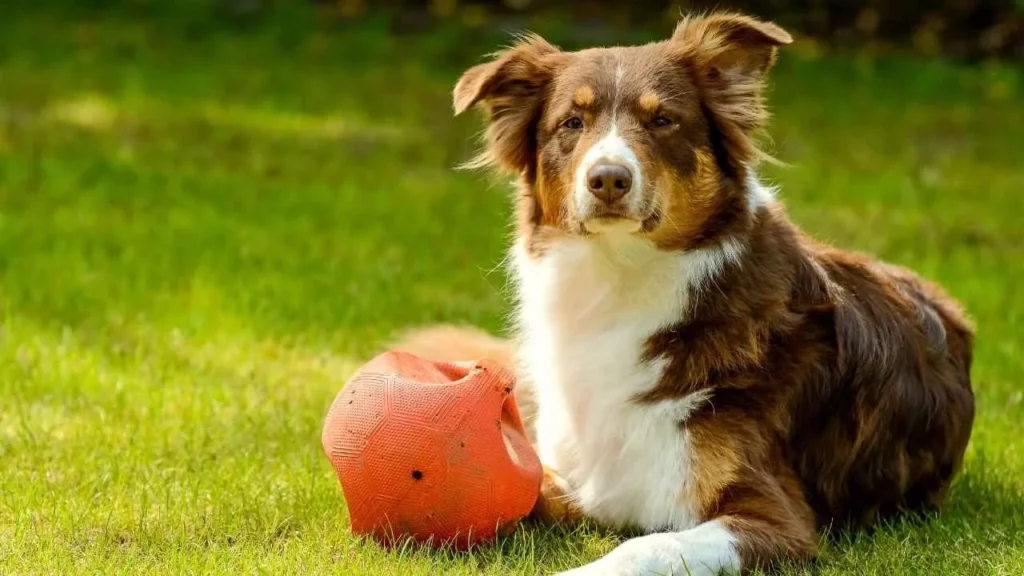
Coat: Thick double coat with longer fur and feathering on legs and tail. Fluffier and denser than the Border Collie.
Grooming Needs: Frequent brushing (2–3 times a week) to avoid mats and reduce heavy shedding, especially during spring and fall. Bathing as needed, plus regular ear checks and nail trims.
Allergy Notes: Aussies are also not hypoallergenic. Their denser coat means more shedding and dander, so allergy sufferers should be prepared with grooming routines and air purifiers.
Conclusion
When comparing the Border Collie vs Australian Shepherd, both are working dogs from the herding group with strong herding instincts and a natural drive for herding livestock. Border Collies typically have a smooth coat or rough coat and a more intense herding style, while Australian Shepherds are versatile and energetic, often excelling in dog sports.
Both Australian Shepherds and Border Collies can develop destructive behaviors without enough free time or proper training. They’re good dogs for active families, but not always the best match for younger children. With the right breeders, early socialization, and structure, these dogs become well-socialized companions for older children, small children, and other dogs. Whether you choose collies and Australian shepherds, each puppy thrives with purpose and engagement.


